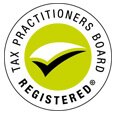We may need to talk about your family trust
You may have read about a recent court decision affecting some family trusts. In a case called Bendel, published on 19 February 2025, the Full Federal Court unanimously held that the private company beneficiary of a discretionary trust has not made a “loan” or “financial accommodation” to the trust merely by not calling for the payment of its trust distribution.
This item only applies to clients with business structures involving trusts that have private corporate beneficiaries where the private company has not called for payment of a trust distribution, thereby creating an unpaid present entitlement (UPE).
It’s a fine distinction, but Full Court said that in order for there to be a loan there has to be an obligation to repay an amount, which does not apply to a UPE as there is no legal obligation to repay anything.
Since 2010 the ATO has been operating on the basis that a UPE owing by a trust to a corporate beneficiary is a loan for the purposes of the Division 7A rules. These rules catch disguised distributions made by private companies to their shareholders or associates.
If the “loan” remains unpaid at the time of lodgement of the company’s tax return, the UPE amount is treated as an unfranked dividend in the hands of the trust unless the company and the trust enter into a complying loan agreement involving both capital and interest payments. This avoids the deemed dividend outcome but usually involves some tax costs and can also create funding and compliance issues for the trust.
The ATO has responded to the Full Court’s decision by seeking special leave to appeal to the High Court. The outcome of the special leave application may not be known for some months, and if special leave is granted there is unlikely to be a decision much earlier than Christmas.
In the meantime, the ATO has revised its earlier Decision Impact Statement (DIS) by announcing that it will continue to apply its existing practice of treating UPEs as loans, in defiance of the Full Court’s decision. This is not the first time the ATO has felt entitled to ignore the law of the land, and it is not something taxpayers could hope to get away with.
Even if its High Court challenge is unsuccessful, the ATO could approach the government for a law change. The previous Coalition government announced in the 2018-19 Budget that it would legislate to make it clear that corporate UPEs are caught under Division 7A. To date, nothing has been done by either side of politics to follow through on that announcement but, depending on what happens in the High Court, a legislative response cannot be ruled out.
If the Full Court’s decision stands (a big if) there will be major implications for discretionary trusts with corporate beneficiaries.
In the longer term, it would make the funding of discretionary trusts a lot easier, while also reducing compliance costs.
In view of all this uncertainty, there is the question of what to do about 2023-24 UPEs. While taxpayers would be within their rights to rely on the Full Court’s decision by not converting those UPEs into complying loan agreements, there are risks associated with that course of action which we need to discuss with you. A safer approach might be to follow the Commissioner’s approach for now and lodge objections to protect your rights.
A decision needs to be made one way or the other by the time the relevant company returns are due for lodgement, which isn’t far off.
Selling property? Buyers must withhold and pay the ATO!
If you’re selling property in Australia and you’re a foreign resident, there are important tax rules you need to know.
Recent changes mean that buyers must withhold 15% of the property’s market value and pay it to the ATO, unless the seller provides a residency clearance certificate.
What’s changed?
From 1 January 2025, all property sellers must prove their residency status by obtaining a clearance certificate from the ATO. If they don’t, the buyer is legally required to withhold 15% of the sale price and remit it to the ATO. This rule is designed to ensure foreign residents don’t avoid capital gains tax (CGT) withholding obligations. The government now assumes all property sellers are foreign residents unless they provide an ATO-issued clearance certificate proving otherwise.
How does the withholding rule work?
If you’re buying property from a foreign resident, you must:
■ Withhold 15% of the purchase price (for contracts from 1 January 2025).
■ Register as a withholder with the ATO before settlement.
■ Pay the withheld amount to the ATO before the sale is finalised.
For contracts entered before 1 January 2025, the withholding rate is 12.5%, but only applies to properties worth over $750,000.
If you’re a foreign resident selling property in Australia, you’ll receive a tax credit for the withheld amount when you lodge your Australian tax return.
What if the property is your former home?
Even if the property was your main residence, foreign residents can’t claim the main residence CGT exemption when selling Australian real estate. This means that any capital gain from the sale is fully taxable in Australia.
In fact, foreign residents are always subject to CGT on property they own in Australia – whether or not they live here.
How do you know if the seller is a foreign resident?
As a buyer, you don’t have to investigate the seller’s residency status yourself. Under standard property contracts, the seller must declare whether they are a foreign resident and provide an ATO clearance certificate if required.
If the seller doesn’t obtain a clearance certificate, the buyer must withhold 15% of the purchase price and pay it to the ATO.
Your solicitor or conveyancer will typically handle this process.
Are there any exceptions?
Yes. In some cases, the ATO may allow a reduced withholding amount – or even none at all. This happens when:
■ The foreign resident seller obtains a variation certificate from the ATO.
■ The seller is exempt from Australian tax (eg, a foreign charity).
■ A CGT rollover applies, such as in a property transfer due to a marriage breakdown.
■ The property is jointly owned by an Australian and a foreign resident – a situation becoming more common in today’s global world.
Other assets affected by these rules
It’s not just real estate – the foreign resident CGT withholding rules also apply to other assets that are closely connected to Australia such as “significant interests” in private unit trusts and companies. Whether you’re a buyer or seller, understanding these rules is crucial to avoid unexpected tax obligations. If you’re unsure how these changes affect you, get in touch with us for expert advice.
Three great reasons to start a Transition to Retirement Pension
Thinking about easing into retirement but still need a steady income? Want to trim your tax bill while growing your super? Or maybe you’d love to knock down some debt before you stop working? If you are 60 or over, you can do just that.
Who can start a super pension?
Using your super to start a pension can help give you the cashflow needed to reach your financial goals. Not everyone is allowed to start a pension but if you are 60 or over, you can. Once you retire or turn age 65 you can unlock the flexibility an account-based pension has to offer. This includes no maximum limit on how much you can take out— so long as you draw a minimum pension.
If you’re between 60 and 65 and still working, you may not qualify for a fully flexible account-based pension. However, you can start a Transition to Retirement (TTR) pension instead. While a TTR pension has some limits—like a maximum annual withdrawal of 10% of your starting balance—it can still be a powerful tool to help you achieve your financial goals. If you’re looking to supplement your income, reduce tax, or boost your super, a TTR pension could be the solution you need!
Let’s look at three typical goals.
1. Replace income while cutting back on work
Want to work less but keep the same income? A TTR pension can help!
As retirement approaches, many people start reducing their work hours—but that can mean a drop in income. By using a TTR pension, you can replace lost wages with tax-free withdrawals from your super.
Meet Theodore
Theodore (age 63) is a town planner. As Theodore nears retirement, he decides to cut back his work hours by one day a week.
That means earning less—but thanks to a TTR pension, not taking home less. His taxable income drops by $25,000, but since his pension withdrawals are tax-free, he only needs to draw $17,000 to maintain the same after-tax cashflow. Less work, lower tax, and the same income—sounds like a win, right?
2. Reduce tax and boost your super
Theodore works less and pays less tax. He is a winner but his super balance isn’t. Perhaps you would prefer more super and less tax.
A TTR pension can free up extra cash so you can salary sacrifice more into super. This means swapping taxable salary (which could be taxed at up to 47%) for concessional super contributions, which are taxed at just 15%.
Meet Matilda
Matilda (age 62) is a marine biologist and earns $160,000 per year. She starts a TTR pension with $100,000 in super and withdraws $7,075 tax-free from her pension. To receive the same amount after tax Matilda would need to earn $11,600. The extra tax-free cash from her TTR allows her to salary sacrifice $11,600 into super. The result? She saves $4,525 in personal tax and her super grows by an extra $2,785 (after super tax). That’s a win-win!
3. Pay your debt off sooner
Have some unwanted debt? A TTR pension can help you clear that debt sooner—so you can enter retirement stress-free.
Meet Simon
Simon (age 60) is a self-employed shopfitter and has $300,000 in super and a $300,000 mortgage on a holiday home (6% interest). He makes monthly repayments of $3,330 and the loan will be extinguished in 10 years (age 70).
He wants to be debt-free at retirement (age 65) so commences a TTR pension and draws down $2,470 per month ($29,640 annually). He uses the extra cashflow to make additional monthly repayments of $5,800 ($69,600 annually).
The result? Simon pays off his loan in 5 years age 65 – saving him interest and giving him peace of mind in retirement.
Is a TTR Pension right for you?
Commencing a TTR pension to reach your financial goals can be a great strategy, but it’s not for everyone. It’s important to weigh the benefits against the long-term impact on your super savings.
To make sure you’re making the right move, speak to your financial adviser. Your adviser can help you with your financial goals, be it to lower your tax, build your super, pay down debt or retire sooner!
Commencing a TTR pension to reach your financial goals can be a great strategy, but it’s not for everyone. It’s important to weigh the benefits against the long-term impact on your super savings.
FEDERAL BUDGET: STOP PRESS
In a shrewd tactical move by the government ahead of its election announcement, the modest personal tax cuts announced in the 25 March 2025 Budget have been hurriedly passed into law, as has the Bill extending the small business $20,000 Instant Asset Write-off threshold to 30 June 2025 (but not beyond that date).
The tax cuts reduce the marginal tax rate on the $18,200 to $45,000 tax bracket from 16% to 14% in two stages from 1 July 2026 and 1 July 2027, giving taxpayers up to an extra $268 a year in their pocket to start with, rising to $536 after the second stage kicks in..
Employees vs. Contractors: What sets them apart
The Australian Taxation Office (ATO) has recently revised its guidance on differentiating between employees and independent contractors. This change follows several court rulings that clarified the criteria for determining whether a worker is genuinely an employee or an independent contractor.
Whether you’re a worker or a business owner, understanding these differences is crucial, as they have an impact on tax, superannuation, and workplace entitlements.
Why does the difference matter?
How a worker is classified – either as an employee or a contractor – impacts who is responsible for paying taxes, providing benefits like superannuation and leave, and who carries legal responsibilities.
Misclassifying a worker can lead to serious financial consequences, including unpaid entitlements and penalties from the ATO.
Key differences between employees and contractors
The primary difference lies in how the worker interacts with the business:
■ Employees work in the business and are part of its operations.
■ Contractors work for the business but maintain their own separate operation.
The contract between the business and the worker is crucial in determining a worker’s classification. While day-to-day work practices play a role, the legal rights and responsibilities outlined in the contract hold the greatest significance.
The ATO’s most important considerations are laid out in Table 1 on the following page. Superannuation and contractors
Even if someone is considered a contractor, they might still be entitled to superannuation if:
■ They’re paid mainly for their labour.
■ They work as a sportsperson, artist, entertainer, or in a similar field.
■ They provide services for performances or media production.
■ They do domestic work for over 30 hours per week.
Workers who are always employees
Some workers are always considered employees, no matter what. This includes apprentices, trainees, labourers, and trades assistants.
Apprentices and trainees work while completing recognised training to earn a qualification, certificate, or diploma. They might be full-time, part-time, or even school-based and usually have a formal training agreement.
Most of these workers are paid under an award, meaning they have set pay rates and conditions.
Businesses hiring them must follow the same tax and superannuation rules as they do for other employees.
Companies, trusts, and partnerships are always contractors
If a business hires a company, trust, or partnership (rather than a person) it’s always considered a contracting arrangement. However, people working for that entity could still be employees of that entity, rather than the business hiring the services.
Why this matters to you?
For workers, knowing your status helps ensure you receive the correct pay and benefits. For businesses, classifying workers correctly helps avoid fines and ensures compliance with tax and employment laws.
If you need more details or want to check your situation, reach out to us for more information. Proper classification today can prevent costly mistakes in the future.

Concessional contributions: Can there be too much of a good thing?
A fantastic way to grow your retirement savings and shrink your tax bill is through concessional contributions (CCs) to super. But more is not always better and like Goldilocks and her porridge, it pays to get things just right.
The basics of concessional contributions
Extra CCs can be made through salary sacrifice or as personal deductible contributions (PDCs). These contributions reduce your taxable income and are taxed at 15% inside super rather than your personal tax rate. That’s a win—especially if you’re on a higher income!
When do concessional contributions lose their tax advantage?
CCs typically save you tax but there’s a point where they stop working in your favour. This happens when your taxable income drops to the effective tax-free threshold—the level where you don’t pay any tax anyway.
For the 2024/25 financial year, the effective tax-free threshold for a single person (without the Senior Australian Pensioner Tax Offset or SAPTO) is $22,575. This includes the standard tax-free threshold of $18,200 plus the Low-Income Tax Offset (LITO).
If your taxable income falls below this, making CCs won’t save you any tax—because you weren’t paying any in the first place!
What is YOUR effective tax-free threshold?
Knowing your effective tax-free threshold will help you decide how large or small your CC should be. This of course assumes you have your cashflow sorted!
The table following illustrates the effective tax-free thresholds that may apply to you depending upon your circumstance.

If your taxable income is already below your threshold, making CCs won’t reduce your tax further—but they will be taxed at 15% inside super. This means you’re losing 15% for nothing and you might be better off considering making after-tax “non concessional contributions” which aren’t subject to this “contributions tax.”
Don’t forget your catch-up concessional cap!
Haven’t been maxing out your concessional cap in previous years? No worries! If your total super balance is under $500,000, you can make extra catch-up contributions using your unused cap amounts from the past five years. You might even be eligible for up to $162,500 in catch-up CCs! That can really get your taxable income down—but remember don’t go overboard!
Watch your concessional cap and other tips
Don’t forget your employer will make CCs via super guarantee and these will also count towards your concessional cap.
Exceeding your concessional cap can mean extra tax and be an administrative headache. Also if you are on a higher income your CCs may be subject to an additional 15% tax in the form of “Division 293” tax. Play it smart and get advice!
Click to view Glance Consultants April 2025 Newsletter via PDF









